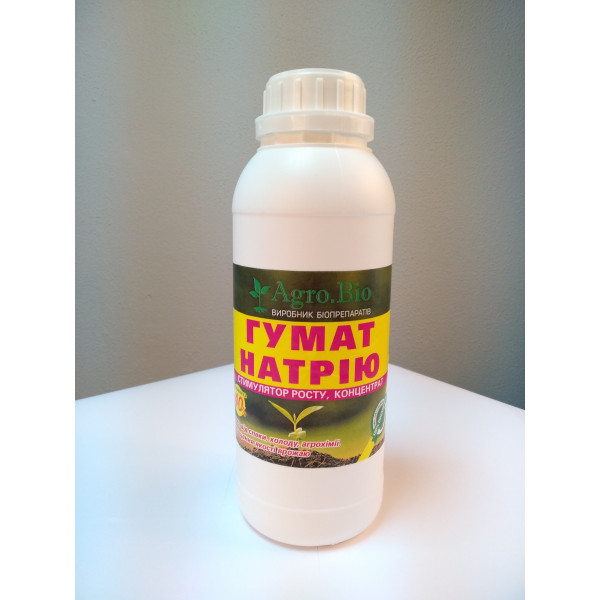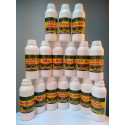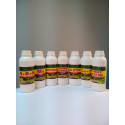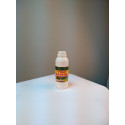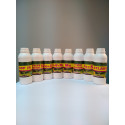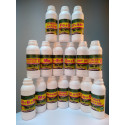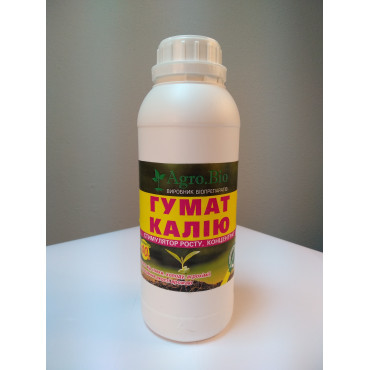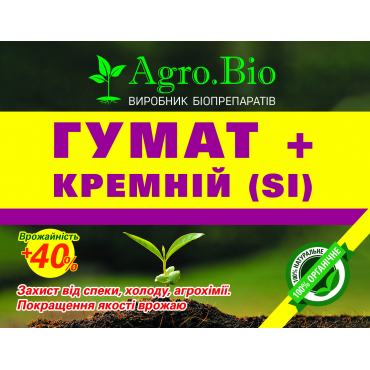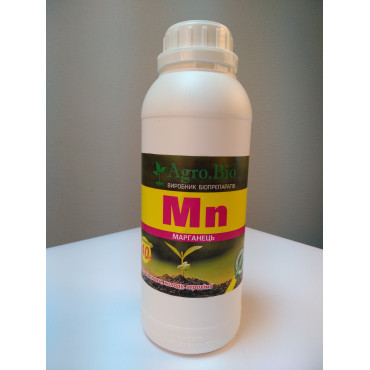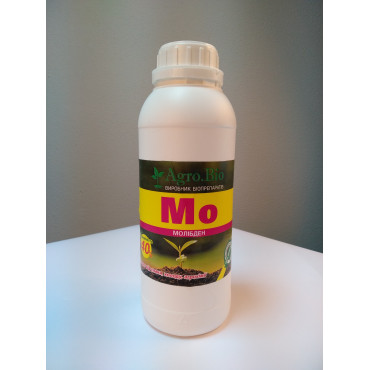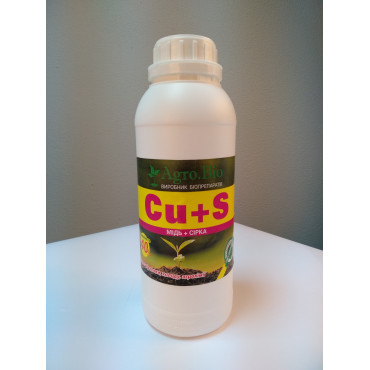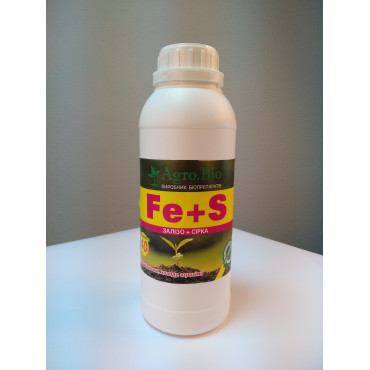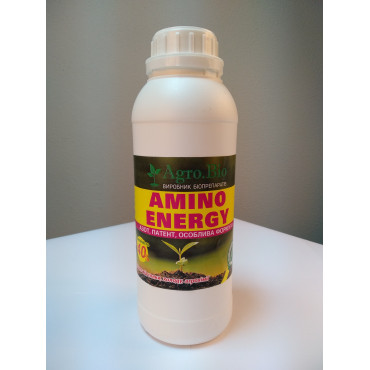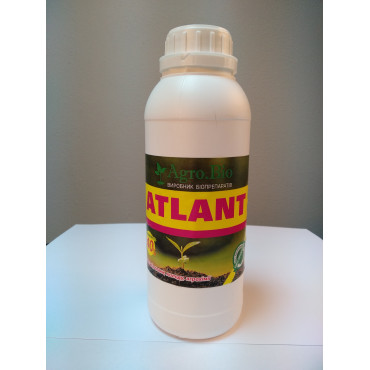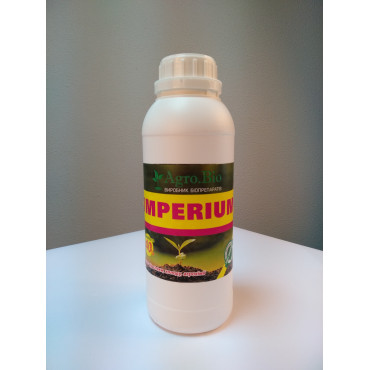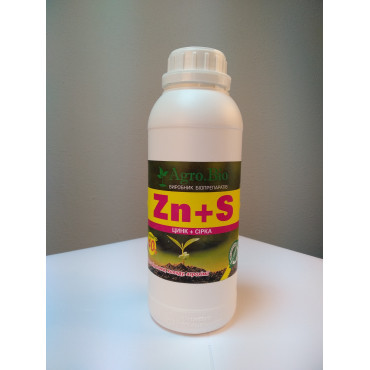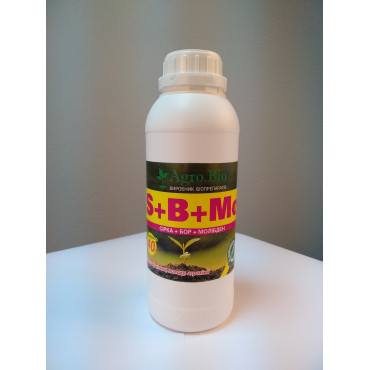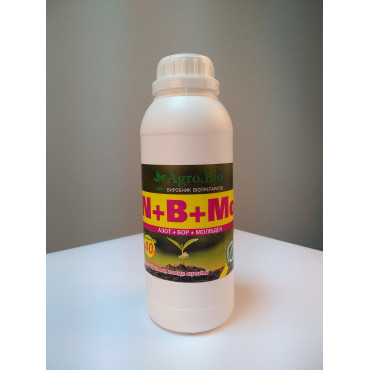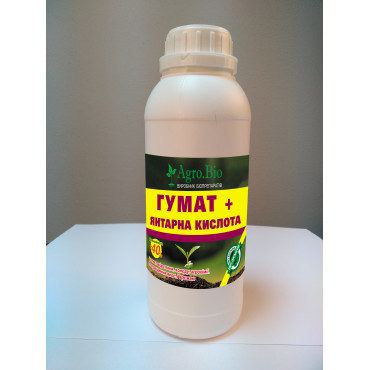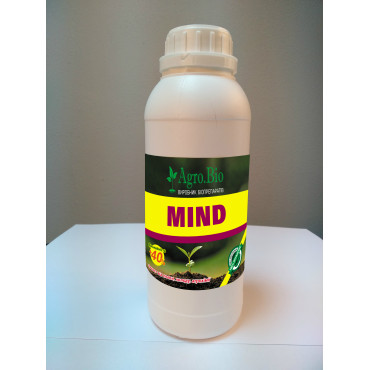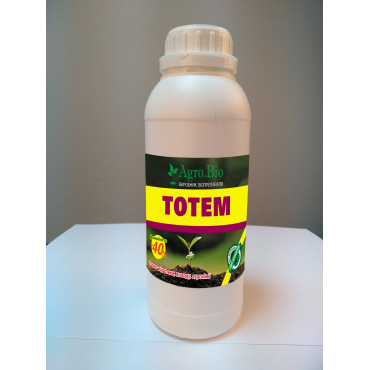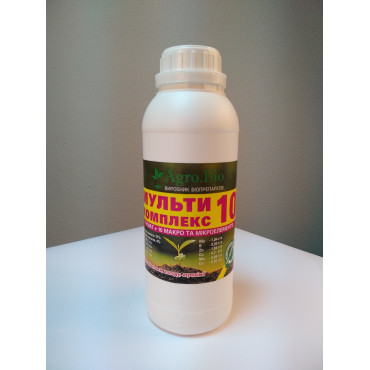Humate Sodium + Phosphorus «Agro.Bio»
$7.00
- Brand: AgroBio
- Product Code: 22100
- Availability: In Stock
For treatment of agricultural plants with preparation Sodic Humate + Phosphorus ballastless made of leonardite produced by AGRO.BIO
No. |
Agricultural plant |
Type of treatment |
Sodic Humate + Phosphorus utilization rate |
Average yield unit, % |
Cereals, pulses |
||||
1 |
wheat (Triticum), barley (Hordeum), rye (Secale), oat (Avéna), rice (Oryza) |
pre-sowing seed treatment |
0,5 - 1,3 l / t |
10-15% increase in gluten content, and in wheat by 2-4% |
1st spraying during tillering stage |
0,25 - 0,3 l / ha |
10-15% |
||
2nd spraying during flowering stage |
0,25 - 0,3 l / ha |
10-15% |
||
2 |
maize (Zea), pea (Pisum), bean (Phaseolus), garavance (Cicer), soybean (Glycine) |
pre-sowing seed treatment |
0,5 - 1,3 l / t |
10-15% |
1st spraying during seadling stage (3-5 leaves) |
0,25 - 0,3 l / ha |
|||
2nd spraying during inflorescence initiation stage, for maize – initial blossom stage |
0,25 - 0,3 l / ha |
|||
3 |
buckwheat (Fagopýrum) |
pre-sowing seed treatment |
0,5 - 1,3 l / t |
10-15% |
1st spraying during branching stage (the beginning of flower-bud formation) |
0,25 - 0,3 l / ha |
|||
2nd spraying (after 10-15 days) |
0,25 - 0,3 l / ha |
|||
Industrial crops |
||||
4 |
sunflower (Helianthus) , rapeseed (Brаssica) |
pre-sowing seed treatment |
0,5 - 1,3 l / t |
10-15% |
1st spraying during formation of 3-4 pairs of leaves stage |
0,25 - 0,3 l / ha |
|||
2nd spraying (after 10-15 days) |
0,25 - 0,3 l / ha |
|||
Root crops |
||||
5 |
sugar beet (Beta vulgaris saccharifera) |
1st spraying during formation of 3-4 pairs of leaves stage |
0,25 - 0,3 l / ha |
15-25% |
2nd spraying during lines confluence stage |
0,25 - 0,3 l / ha |
|||
6 |
potato (Solanum tuberosum) |
pre-sowing seed treatment |
1 l / t |
15-25% |
1st spraying during formation of 5-7 leaves stage |
0,25 - 0,3 l / ha |
|||
2nd spraying during flower-bud formation stage |
0,25 - 0,3 l / ha |
|||
7 |
carrot (Daucus) |
pre-sowing seed treatment |
0.1 - 0.125 l / kg |
15-25% |
1st spraying during formation of 2nd leaf stage |
0,25 - 0,3 l / ha |
|||
2nd spraying (after 10-16 days) |
0,25 - 0,3 l / ha |
|||
Vegetable crops |
||||
8 |
tomato (Lycopersicum), pepper (Capsicum), eggplant (Solánum melongéna), marrow squash (Cucurbita) |
pre-sowing seed treatment |
0.1 - 0.125 l / kg |
15-25% |
1st spraying during formation of 2-4 pairs of leaves stage |
0,25 - 0,3 l / ha |
|||
2nd spraying (after 10-15 days) |
0,25 - 0,3 l / ha |
|||
9 |
cabbage (Brаssica), cucumber (Cucumis sativus) |
pre-sowing seed treatment |
0.1 - 0.125 l / kg |
15-25% |
1st spraying 3-5 days after planting the seedlings |
0,25 - 0,3 l / ha |
|||
2nd spraying (after 10-15 days) |
0,25 - 0,3 l / ha |
|||
Fruit and berry crops |
||||
10 |
apple tree (Malus), pear tree (Pуrus), cherry tree (Cеrasus), plum tree (Prunus), grape (Vitis) etc. |
1st spraying 5-8 days after flowering |
0,25 - 0,3 l / ha |
20 - 30% |
2nd spraying during the fruit formation stage |
0,25 - 0,3 l / ha |
|||
Cucurbits |
||||
11 |
pumpkin (Cucurbita), melon (Melo sativus), watermelon (Citrullus) |
pre-sowing seed treatment |
0.1 - 0.125 l / kg |
20 - 40% |
1st spraying 3-5 days after planting the seedlings |
0,25 - 0,3 l / ha |
|||
2nd spraying (after 10-15 days) |
0,25 - 0,3 l / ha |
|||
ADVANTAGES OF AGRO.BIO SODIC HUMATE + Phosphorus USE
Ecologically safe preparation AGRO.BIO SODIC HUMATE + Phosphorus has the following affects:
- the growth of metabolism energy in the plant cell;
- acceleration of seeds evocation and germination;
- intensive development of the root system (rapid plant establishment), stimulation of the growth of shoots and reproductive organs;
- activation of protein and carbohydrate metabolism;
- acceleration of the synthesis of chlorophyll, sugars, vitamins, essential amino acids, oils, escalation of gluten content in wheat, and so on;
- improvement of the biochemical composition (forming enzymes) and processes of respiration that increase the resistance of plants to adverse environmental factors (pollution) and stresses (drought, frost, diseases, etc.).
- increase of frost resistance;
- promotion of nitrogen absorption;
- reduction of radio nuclides, herbicides, pesticides content in finished products;
- acceleration of cells recovery in damaged plants (with pesticides, harmful substances and pathogens) – when used for two weeks (spraying or wetting);
- up to 7 times increase of plant bodies' cell membranes permeability;
- facilitation of nutrients ingestion into cells;
- promotion the growth and development intensity.
When applying multiple-nutrient organic fertilizer SODIC HUMATE + Phosphorus:
- the fertility of the soil is being recreated;
- yield is being enhanced up to 15-25% for grain crops and up to 40% for vegetable crops;
- the expenses for mineral fertilizers are being reduced up to 20%;
- the efficiency of fungicides, insecticides, herbicides use is being increased;
- the use of the preparation (less than 100 microns) with spraying system and liquid supplying pumps does not clog the nozzles;
- does not cause corrosive influence on agricultural machinery' units and aggregates at treatments.
The preparation SODIC HUMATE + Phosphorus application technology:
- Pre-sowing seed treatment (2% solution) is used for soaking seeds of all crops (grain, leguminous, technical, oil, vegetable, cucurbits – for preparation of 10 liters of solution 0.5-1.3 liters of the preparation is required); transplant seedlings, gladiolus, tulips bulbs, tubers, etc. (ornamental plants – 1 liter of solution requires 0,1-0,125 l of the preparation); and the treatment lasts - 30 minutes.
- Foliar application – top dressing is used for surface watering, sprinkling irrigation, spraying; with use of machinery and aviation it is needed 1-2 liters of preparation per 200-400 liters of water, water temperature should be not lower than 15-20°C; under high water hardness it is necessary to pre-add specific substance – carbamide, and it is recommended to combine it with mineral fertilizers, which significantly reduces their utilization up to 10 - 30%. It is appropriate to combine a solution of a preparation with pesticides when using it as an antistress preparation during leaf feeding.
- Root nutrition – before the plowing the preparation is applied directly into the soil – for this type of application it is required 2 liters of the preparation per 100 liters of water; it is also appropriate to combine it with plant protection preparations.
Advice from the manufacturer:
For indoor plants it is recommended to use the preparation Sodic Humate + Phosphorus, which will promote: soil composition improvement, more intensive plant growth and development, decorativeness, intensive flowering, fructification, resistance to various pests and diseases. Treatment with preparation is carried out once every 15 days.
Optimal conditions for the plants treatment with Sodic Humate + Phosphorus – in the morning and evening, at an air temperature of 10-25°C.
Composition of substances in the preparatio AGRO.BIO Sodic Humate + Phosphorus
| The fertilizer AGRO.BIO Sodic Humate + Phosphorus contains: |
|
highest content of natural humic acids (humic and fulvic) |
15.0% 0.2 |
| mass fraction of sodium |
4,6% 0,2 |
| P2O5 |
'37 / l |
| hydrogen index рН |
10.0% 0.01 |
| The period of humification of raw materials is 70 million years. |

